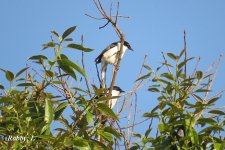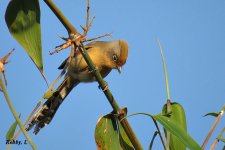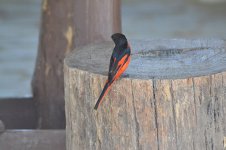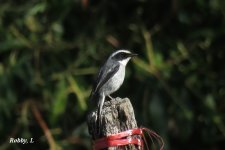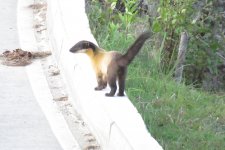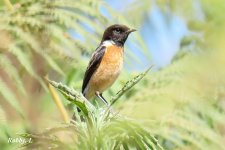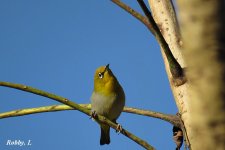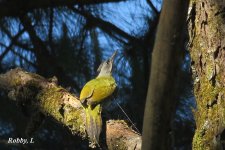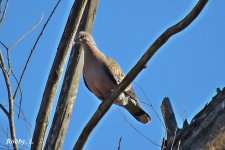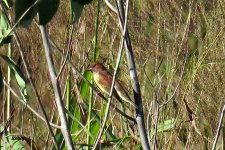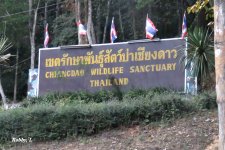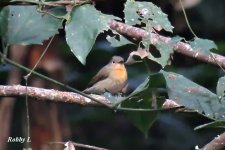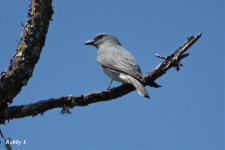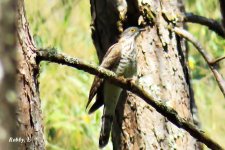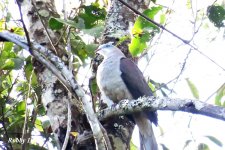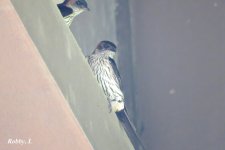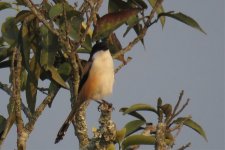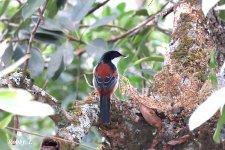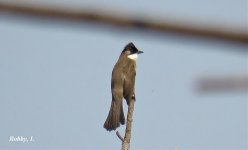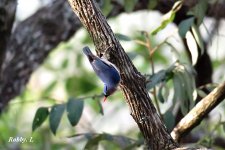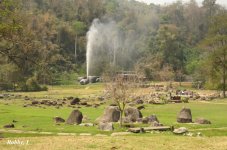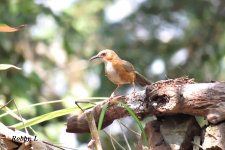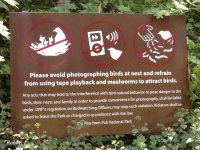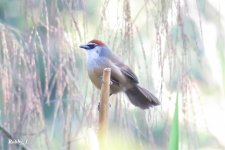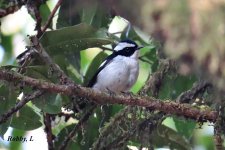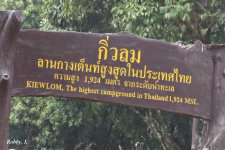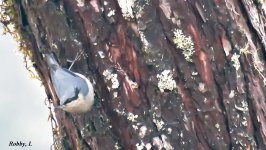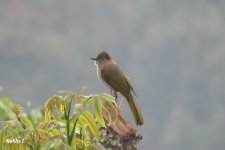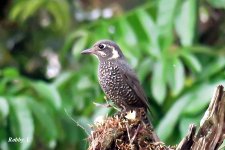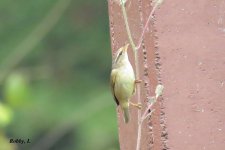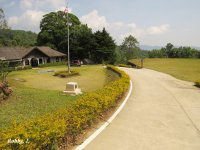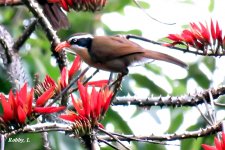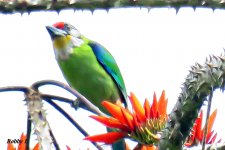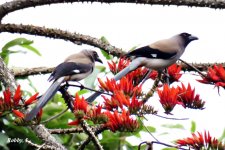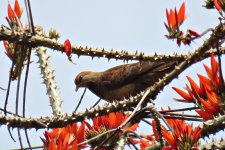robby thai
Well-known member
Nam Tok Mae Surin NP Headquarters area.
Again no charge for entry only paid for the nights camping and car entry, good camping area close to a river and toilets with mains power and lights at night, houses for rent but didn’t ask price.
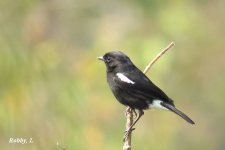
Male Pied Bushchat
Not a huge area to explore but lots of bird calls on a short loop road that runs past a nursery area and a rough road up to a dam that holds big fish and several people trying to catch them. There is another rough road which starts at the beginning of the dam road and leads up the river to agricultural land.
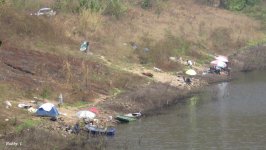
Fishing in the dam.
Most of the birds seen were around the loop road and up the gully on the far side of the dam. There is a walking track that goes round the dam and tracks up the gully, some pig sign up there and also a pack of dogs.
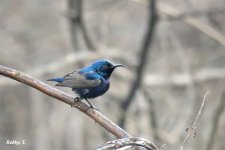
Male Purple Sunbird.
I had read of a nature trail at Mae Sareng 17km south of the HQ where there were said to be lots of birds, after having to pay 200b to walk the trail I found the bit about plenty of birdlife to be a fiction and a waste of 200b. I did continue to drive up the road that passes that trail but saw very little.
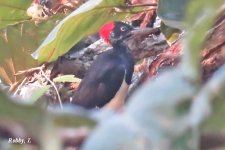
White-breasted Woodpecker.
Friendly staff who gave us far to many vegitables which they grow themselves, mains power with lights on at night and charging points for batteries, there are some dogs but they gave us no trouble. A nice place to stay close to Mae Hong Son for fuel and anything else that’s needed and coupled with the waterfall to the south a great park for birds.
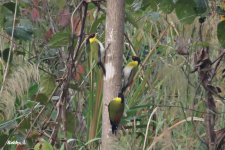
Black-headed Woodpeckers.
Birds
Blue-winged Leafbird
Golden-fronted Leafbird
White-bellied Woodpecker
Black-headed Woodpecker
Asian-barred Owlet
Common Flameback
Hill Myna
Asian Brown Flycatcher
Bronzed Drongo
Spangled Drongo
Collared Falconet
Coppersmith Barbet
Liniated Barbet
Common Kingfisher
Grey-headed Parakeet
Pied Bushchat
Thick-billed Green Pigeon
White-crested laughingthrush
Purple Sunbird
Blue Rock Thrush
Little (striated) heron
Little-green Bee Eater
Spotted Dove
Again no charge for entry only paid for the nights camping and car entry, good camping area close to a river and toilets with mains power and lights at night, houses for rent but didn’t ask price.

Male Pied Bushchat
Not a huge area to explore but lots of bird calls on a short loop road that runs past a nursery area and a rough road up to a dam that holds big fish and several people trying to catch them. There is another rough road which starts at the beginning of the dam road and leads up the river to agricultural land.

Fishing in the dam.
Most of the birds seen were around the loop road and up the gully on the far side of the dam. There is a walking track that goes round the dam and tracks up the gully, some pig sign up there and also a pack of dogs.

Male Purple Sunbird.
I had read of a nature trail at Mae Sareng 17km south of the HQ where there were said to be lots of birds, after having to pay 200b to walk the trail I found the bit about plenty of birdlife to be a fiction and a waste of 200b. I did continue to drive up the road that passes that trail but saw very little.

White-breasted Woodpecker.
Friendly staff who gave us far to many vegitables which they grow themselves, mains power with lights on at night and charging points for batteries, there are some dogs but they gave us no trouble. A nice place to stay close to Mae Hong Son for fuel and anything else that’s needed and coupled with the waterfall to the south a great park for birds.

Black-headed Woodpeckers.
Birds
Blue-winged Leafbird
Golden-fronted Leafbird
White-bellied Woodpecker
Black-headed Woodpecker
Asian-barred Owlet
Common Flameback
Hill Myna
Asian Brown Flycatcher
Bronzed Drongo
Spangled Drongo
Collared Falconet
Coppersmith Barbet
Liniated Barbet
Common Kingfisher
Grey-headed Parakeet
Pied Bushchat
Thick-billed Green Pigeon
White-crested laughingthrush
Purple Sunbird
Blue Rock Thrush
Little (striated) heron
Little-green Bee Eater
Spotted Dove




